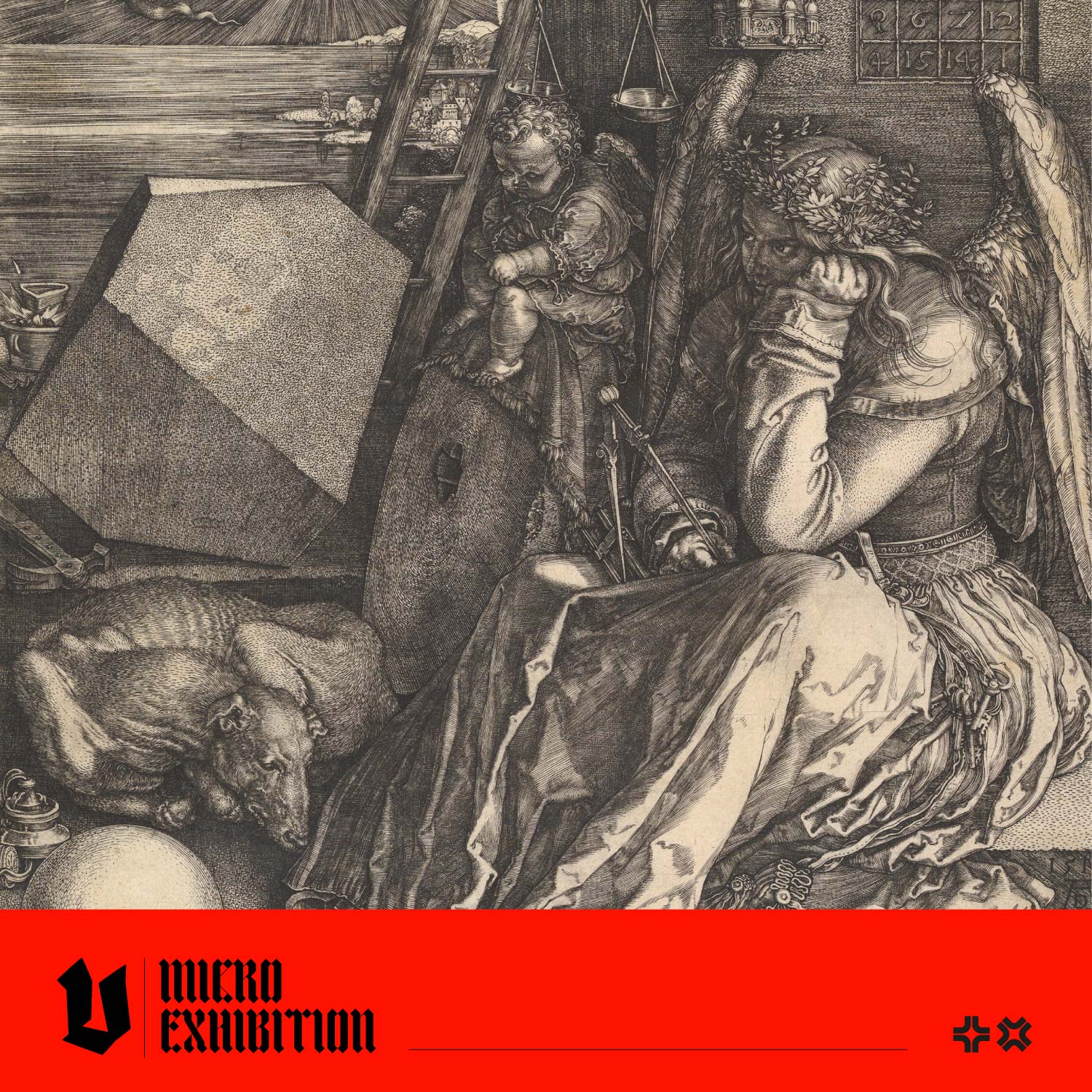Albrecht Dürer is renowned for his exceptional engraving and printmaking skills. His works exhibit a mastery of technique and an in-depth understanding of symbolism and human experience. We've been working on our next release, The Albrecht Dürer Collection: A Curated Archive of 162 Downloadable Masterpieces - a Vault Editions Masters Series, an epic image archive of a selection of his woodcuts, engravings and etchings. It's a fascinating collection of truly stunning works, and we can't wait to share it with you.
This blog post delves into three of Dürer's most celebrated engravings, known as his Meisterstiche, or master prints: 'Knight, Death and the Devil' (1513), 'Melencolia I' (1514) and 'St. Jerome in His Study' (1514). The use of shadow, light and texture makes these images excellent examples of Dürer's incredible technical ability. These works are not a series or companion pieces, but renowned art historian Friedrich Lippmann theorised they are linked by the virtues they represent: the moral, the spiritual and the intellectual.

Albrecht Dürer's Early Life and Education
During his lifetime, Albrecht Dürer had significant cultural influence as a painter, engraver, and author. Hundreds of years after his death, his work continues to inspire and influence artists and craftspeople. His engravings are beautiful examples of his skills as a master artist, showcasing his technical prowess and innovative use of symbolism.
Dürer was born in Nuremberg, Germany, in 1471. His early drawing, known as 'Self-Portrait at the Age of 13,' shows his incredible artistic talent. When he was 15, Dürer apprenticed with the prominent artist Michael Wolgemut, whose workshop produced altarpieces, book illustrations, paintings, and woodcuts. During his lifetime, Dürer travelled extensively throughout Europe, absorbing influences from artists in the Low Countries and Italian Renaissance masters and incorporating them into his work.

What Does 'The Knight, Death, and the Devil' Mean?
This intricate engraving depicts a resolute knight on horseback, accompanied by a dog, traversing a rugged landscape. He is flanked by personifications of Death, holding an hourglass, and the Devil, depicted as a monstrous, leering figure. Dürer himself referred to this work as 'the Rider', leaving its meaning open to interpretation, but scholars interpret this work as an allegory of moral steadfastness and Christian virtues. The knight, unwavering in his journey, symbolises the righteous path of a Christian warrior, unperturbed by the threats of death and evil.
Dürer employed precise line work and shading to create depth and texture, bringing the scene to life. His use of shadow enhances the dramatic effect, highlighting the contrast between the knight's stoic demeanour and the ominous figures of Death and the Devil.

The Significance of 'St. Jerome in His Study'
This engraving portrays St. Jerome, a prominent Christian scholar, in his study. The scene is rich with detail and shows St. Jerome deeply engrossed in his work, surrounded by books and scholarly instruments, with a lion resting peacefully nearby. According to legend, St. Jerome befriended a lion after extracting a thorn from its paw. This work embodies the ideal of scholarly devotion. Symbolic elements, such as the skull and hourglass, are a memento mori, reminding viewers of the transience of life and the importance of spiritual contemplation. Dürer's meticulous engraving technique is evident in the detailed aspects of the study's furnishings and St. Jerome's serene, focused expression. The play of light and shadow creates a realistic and inviting atmosphere, and perspective draws viewers into the peaceful scene.
St. Jerome's significance as the translator of the Bible (a 15-year endeavour!) underscores the Renaissance humanist emphasis on scholarly achievement and the pursuit of knowledge. Dürer's depiction reflects the period's reverence for classical learning and intellectual inquiry.

Analysing Dürer's Engraving, 'Melencolia I'
'Melencolia I' is one of Dürer's most enigmatic works. It features a winged figure, presumably an allegory of Melancholy, surrounded by various symbols and tools associated with geometry and the arts, such as the magic square, geometric shapes, and crafting tools. This engraving explores the theme of melancholia and the artist's temperament. The figure's pensive expression and the scattered objects suggest a state of creative frustration and introspection. Dürer's intricate lines and careful shading create a complex, multi-layered composition. Using perspective and symbolic detail invites viewers to ponder the deeper meanings and artistic challenges represented. Scholars believe 'Melencolia I' is an allegory for the nature of artistic inspiration and the struggles inherent in the creative process.

Comparative Analysis of Dürer's Meisterstiche
Dürer's engravings share themes of human experience. Each piece's unique symbolism and composition offer insights into the Renaissance era's interest in life's spiritual and existential dimensions.
From the stoic resolve in 'The Knight, Death, and the Devil' to the contemplative serenity of 'St. Jerome in His Study and the intellectual depth of 'Melencolia I,' Dürer's engravings showcase his mastery in capturing the multifaceted nature of human experience. Through these works, Dürer invites us to reflect on the moral, spiritual, and existential questions that have fascinated humanity for centuries. These pieces were very well received when originally published and continue to captivate audiences and scholars, highlighting Dürer's enduring influence and the timeless appeal of his artistic vision.
Interested in Learning More?
Stay tuned for our new release, The Albrecht Dürer Collection: A Curated Archive of 162 Downloadable Masterpieces - a Vault Editions Masters Series. This unique book is a comprehensive pictorial archive that delves into the profound depth and meaning behind Dürer's prolific output in woodcuts, engravings, and etchings. Each of the 162 artworks showcased has been carefully curated to showcase the breadth and depth of his work. Get ready to immerse yourself in Albrecht Dürer's legacy and elevate your artistic journey by learning from his unparalleled techniques and creative insights in high-resolution, never-before-seen detail, coming soon!




